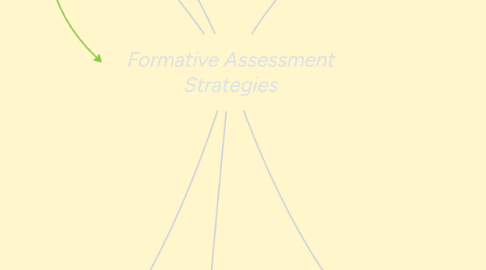
1. Number of quizzes that contain higher or lower level questions
2. Self-Marking by Asmaa
2.1. Strategy
2.2. When and Why
2.2.1. It can be used during learning to determine their level of understanding regarding a particular topic or unit of study and and also to identiy areas that need more learning.
2.3. How is it done
2.3.1. Student take the quiz and use a key to mark them by himself
3. Checklists by Heba
3.1. Strategy/Questions
3.1.1. To design checklist: 1- Identify the skills to be included 2- List target behaviors separately 3- Organize the checklist sequentially 4- Deterine how record keeping will be done
3.2. Student's Understanding
3.3. Example
3.3.1. A checklist is developed by the teacher to specify the language features, language structures, spelling, punctuation, or grammatical features which the student needs to check that they have used in their piece of writing. The students tick the box next to each item on the checklist to show that they have checked their piece of writing for that item. Checklists are usually provided to the students prior to writing and used by them at the editing/proofreading stage of the writing cycle. In addition, the students can also edit each other’s work using a checklist.
4. Drawing By Ahmed
4.1. Strategy
4.1.1. Provides an open form of assessment, allowing students to respond, by answering a question by drawing their responses. There are a number of variations., students may: draw a picturedraw , label a picturedraw, and annotate a pictureadd to a picture
4.2. How is it done
4.2.1. Give a clear instruction that focuses on what you want to find out, for example, Draw a heron showing the features that enable it to catch its food in shallow water. Instructions can be oral or written, or both.
4.2.2. State if you want the drawing labelled or annotated.
4.2.3. Ensure that there is enough room on the paper to complete the task neatly.
4.2.4. Have a list of features you expect to see in the drawing, for example, Draws appropriate beak and feet. Sometimes it is appropriate to share this with students:
4.2.5. Before they draw, to provide guidelines on components of their drawing;after they have completed their drawing, to encourage self-assessment or to identify areas of uncertainty.
4.3. When and Why
4.3.1. When writing is likely to be a barrier to students showing what they know;to assess student understanding of concepts;when there is a need to check students’ familiarity with the selected context;to assess observation skills;to assess students’ ability to communicate pictorially;before, during, and after teaching;to show progress. Students either do another drawing or add to their first;at all age levels
4.4. Example
4.4.1. I asked my student after doing research about a specific subject called " the engineering process " , to express his understanding of it by drawing a mind map of the engineering process.
5. Thumbs Up, Thumbs Down by Dina
5.1. How and when?
5.1.1. This tool can be used throughout the lesson to check for understanding, but also to learn about the students prior knowledge on a new subject.
5.2. Strategy/Questions
5.2.1. It is one way of asking students about their learning.
5.2.2. The teacher can ask for the understanding of the concept with direct questions like: "Is this clear?" For the prior knowledge assessment the teacher can use a list of statements based on the concept explained and let the student respond in a true/false type manner.
5.3. Student's understanding
5.3.1. The advantage of this method is that the teacher can observe the understanding of the whole class with one glance and there is no communication needed so there is minimal disruption. It may be relatively easy for students that do not understand the hide behind the right answer (i.e. give a thumbs up when they do not get the concept completely)
5.4. Example
5.4.1. Do you understand Ohm's law? If you understand it, Thumb up. If not, Thump down.
6. Self Assessment by Asmaa
6.1. When and Why it can be used
6.1.1. It occurs during instruction. It helps students to reflect on their own learning in relation to unit goals or outcomes.
6.2. How is it done?
6.2.1. We Just need to ask right questions. This may include questions that deal with students' understanding and with identification of areas that need more practice or more information.
6.3. Example
6.3.1. Checklists and open-ended questions
